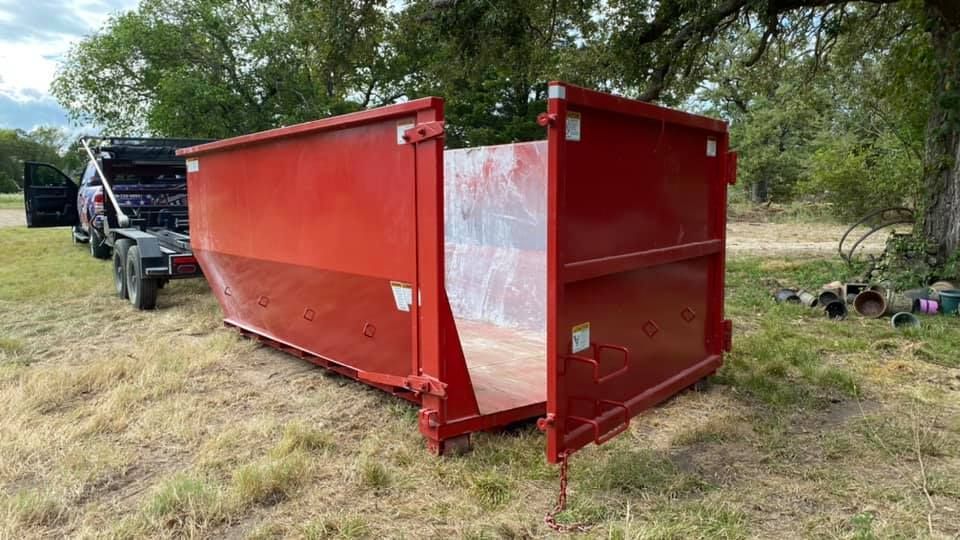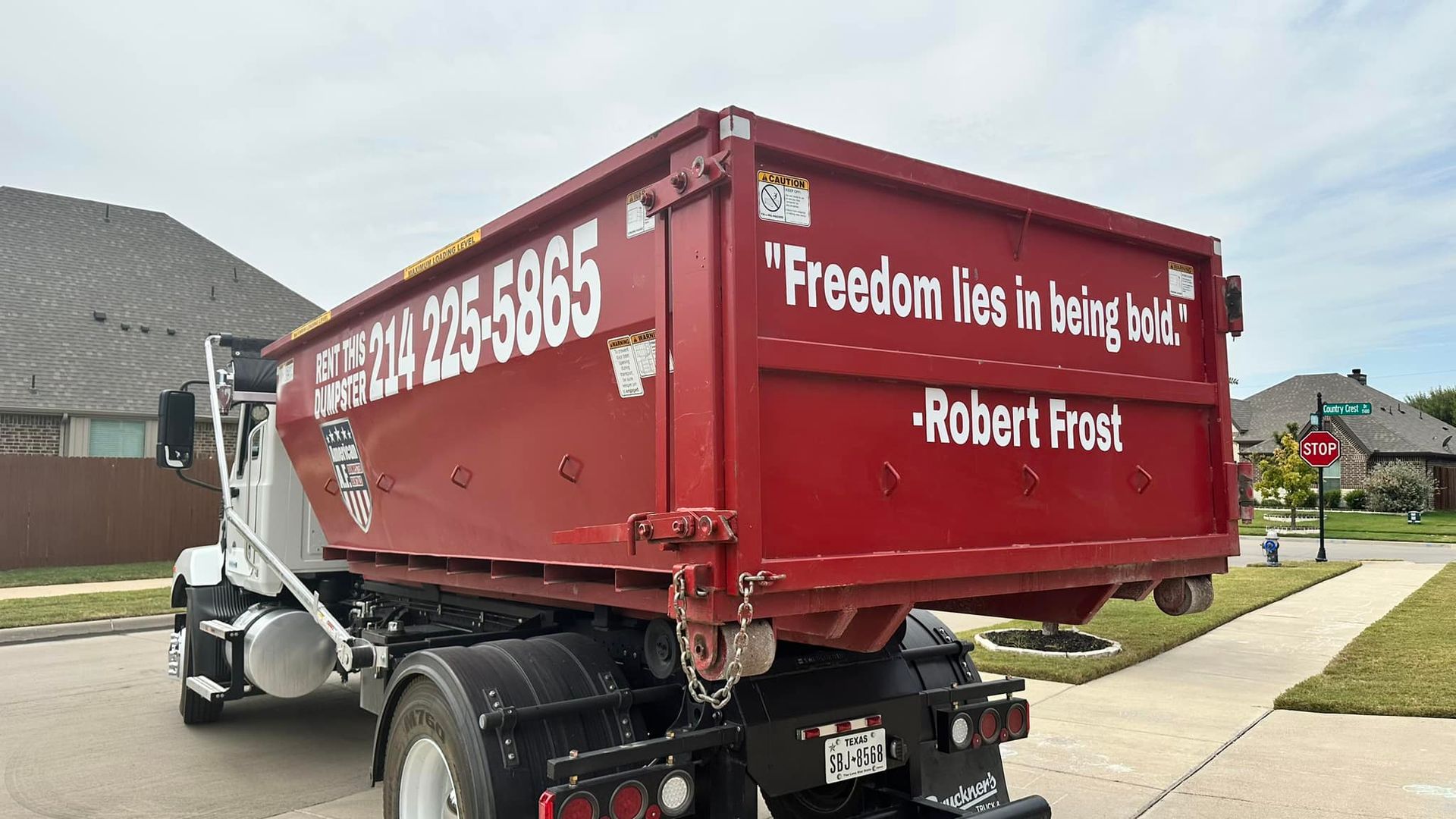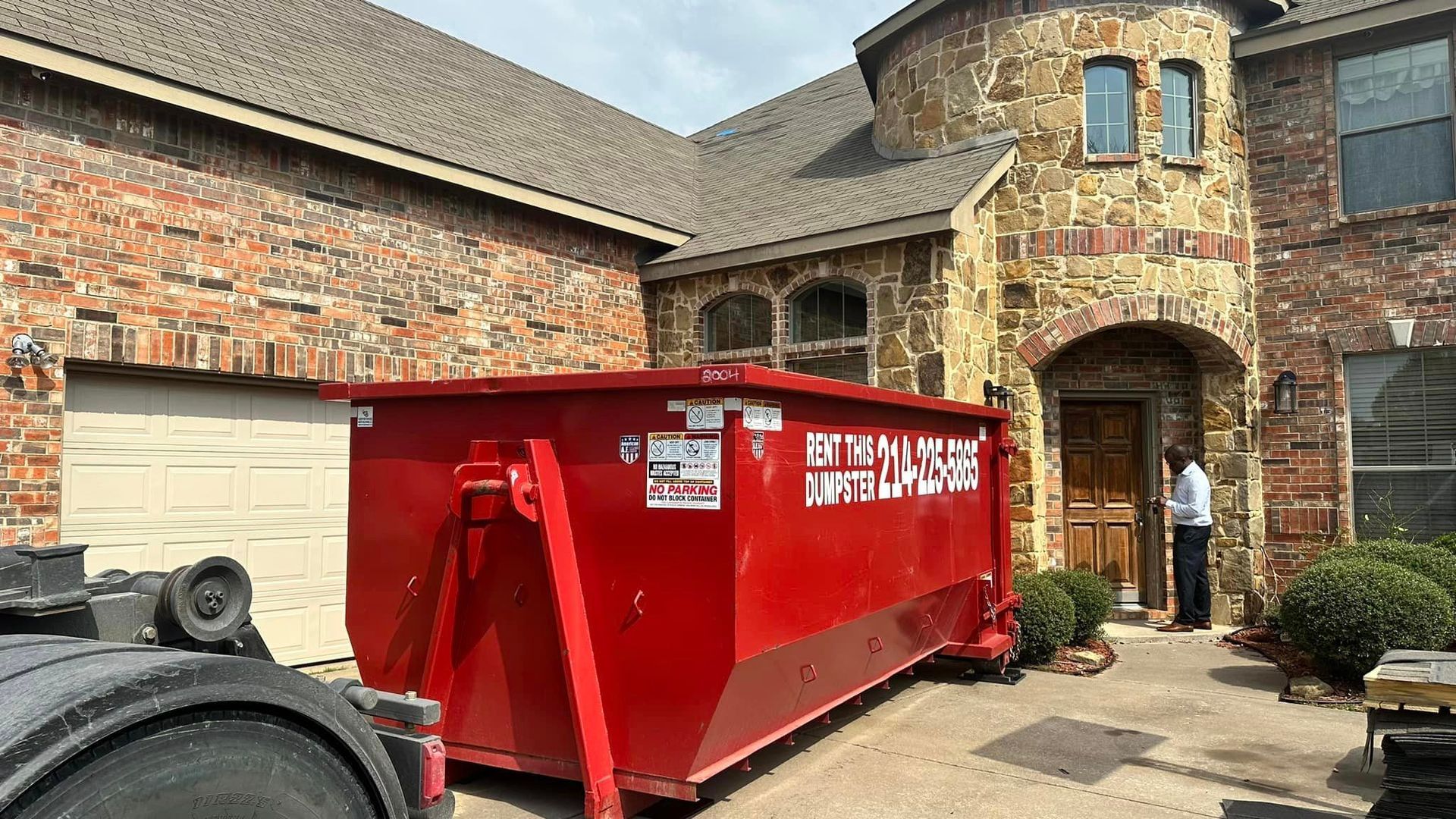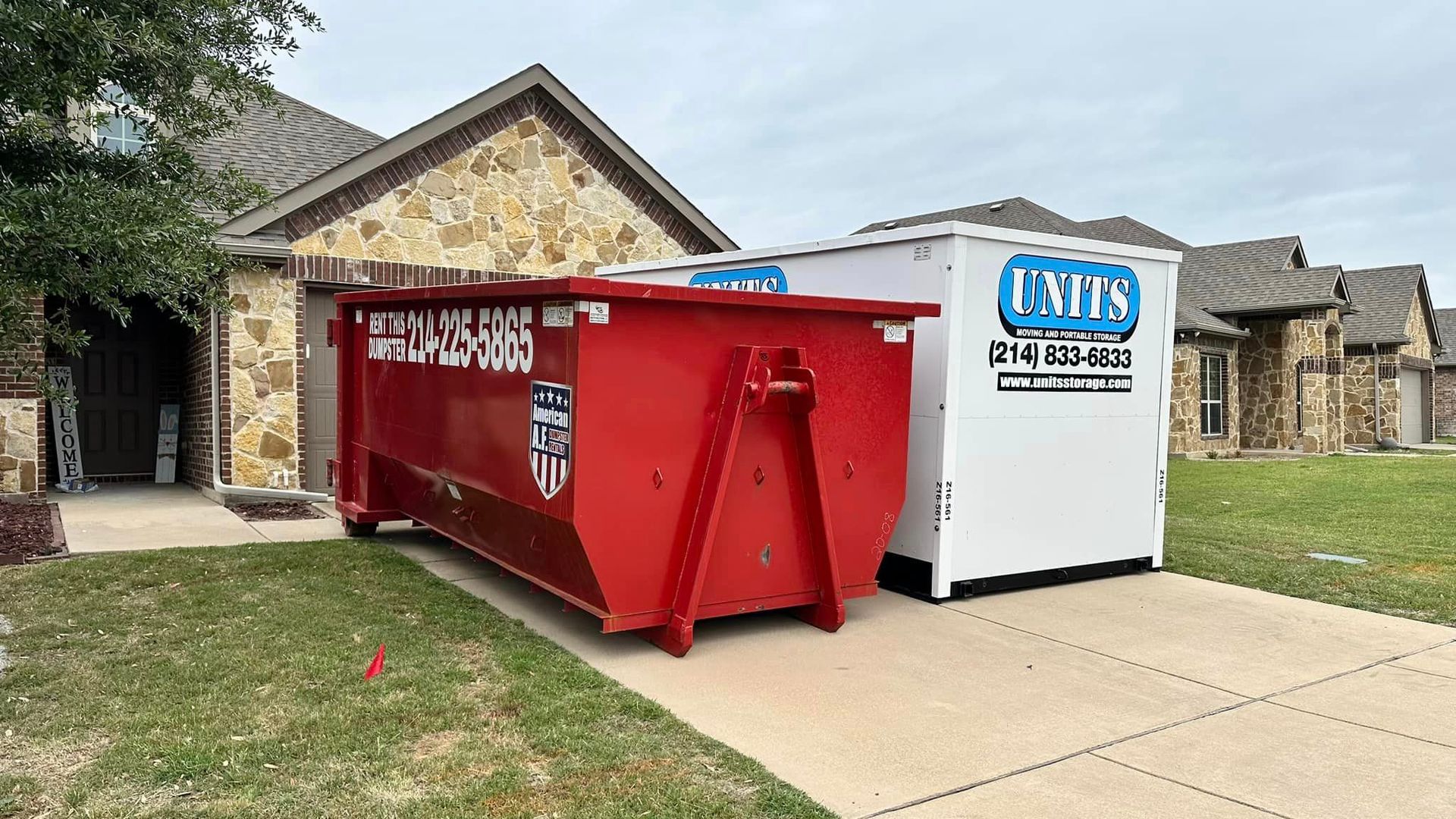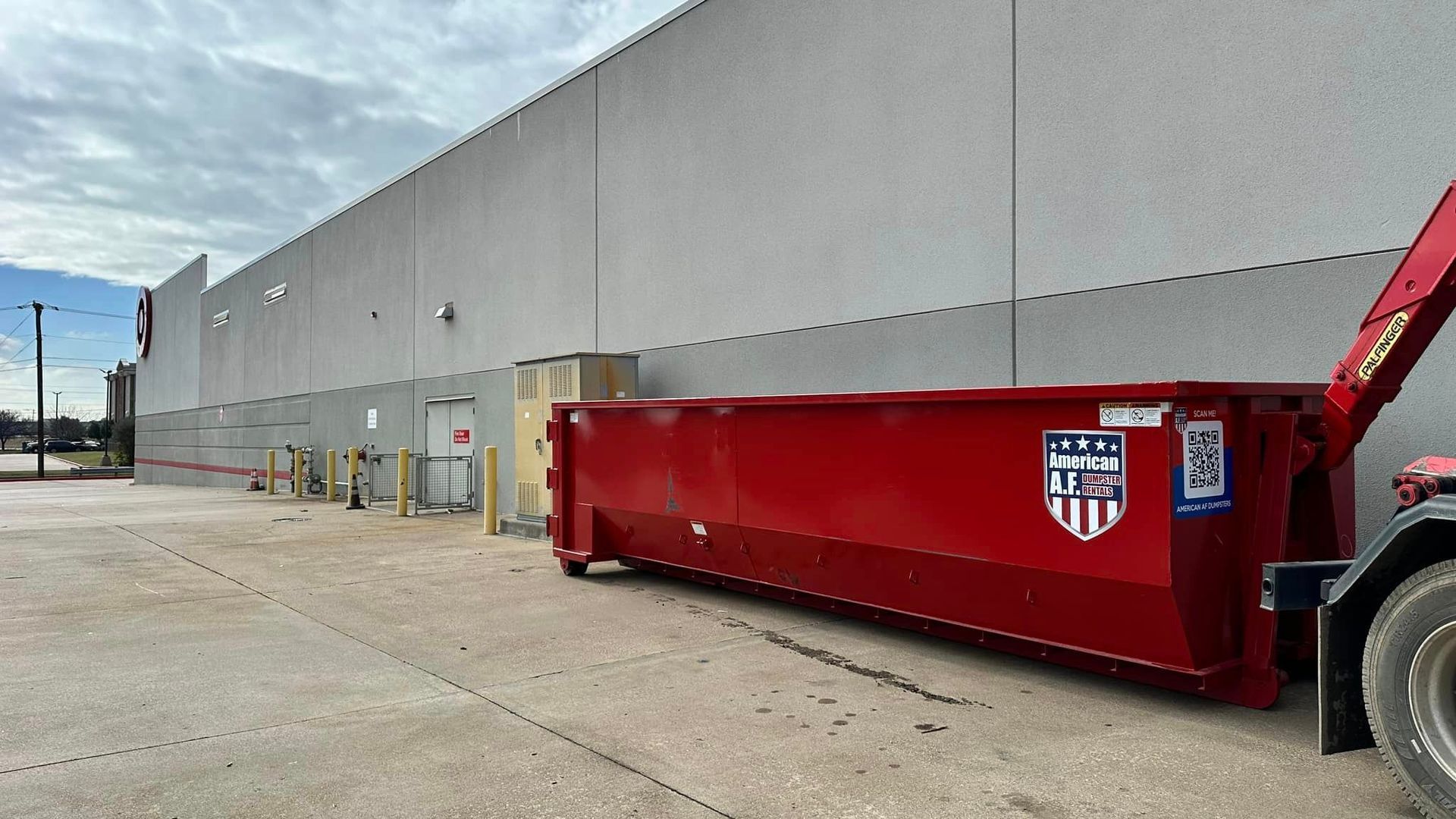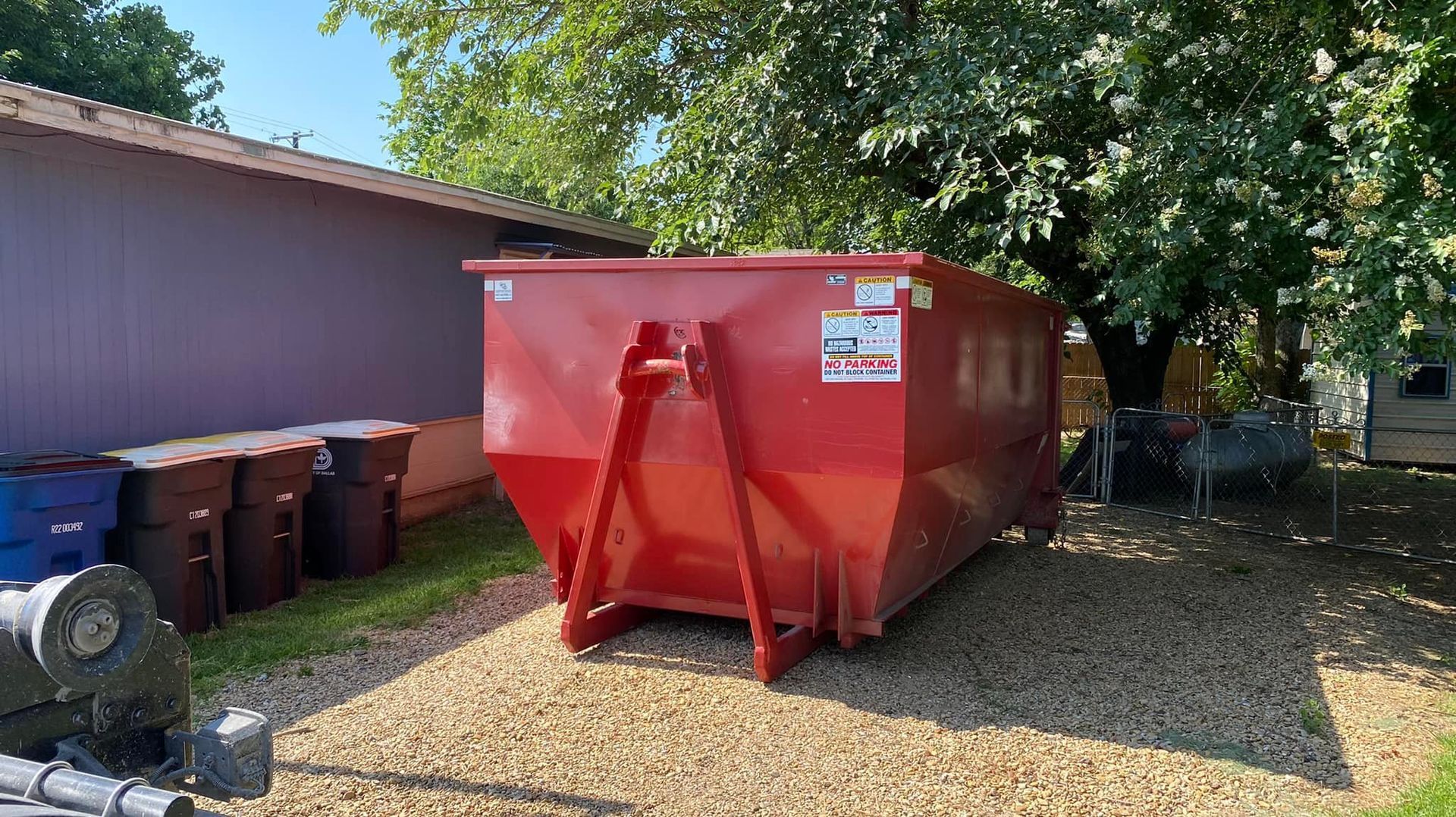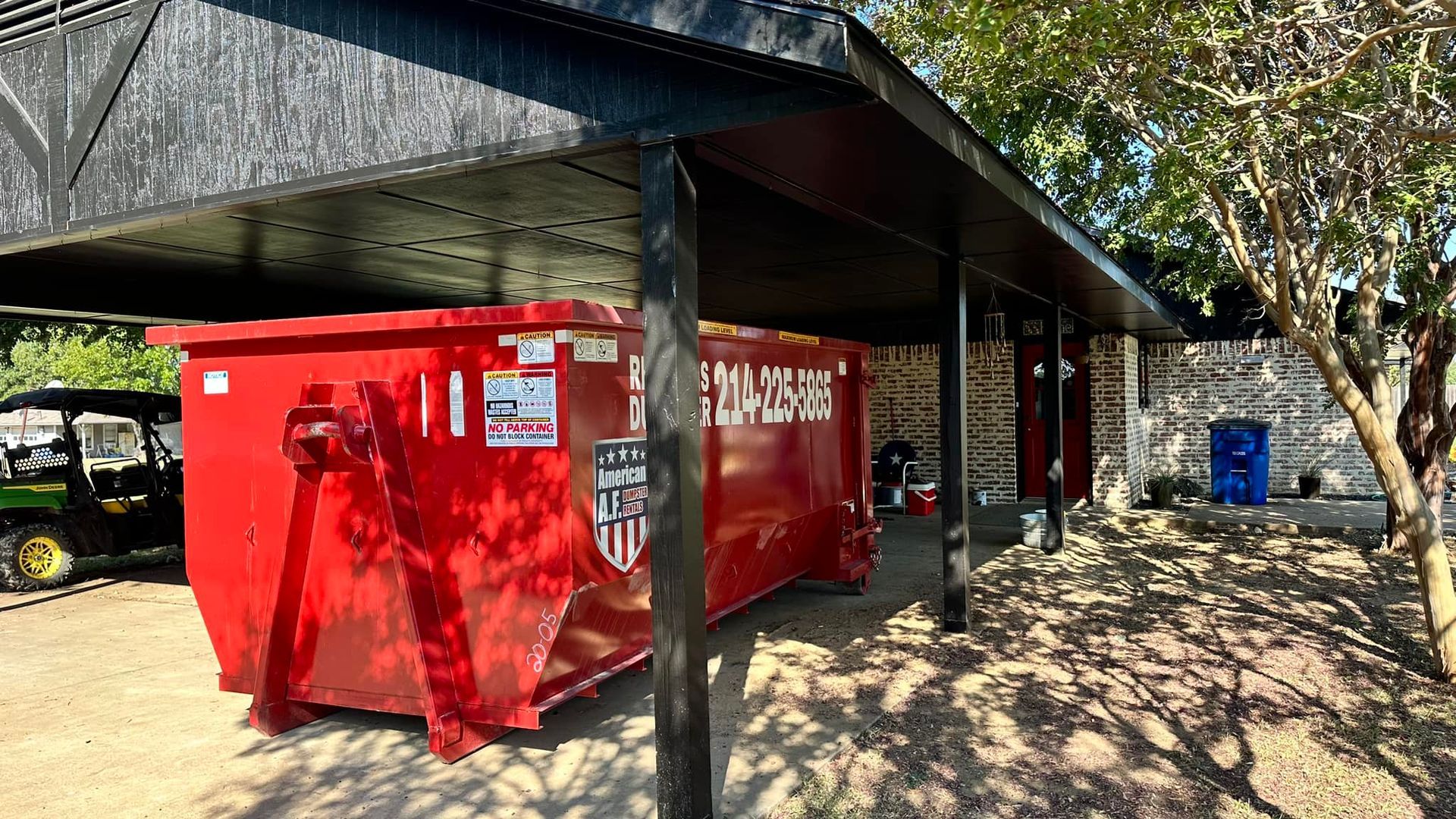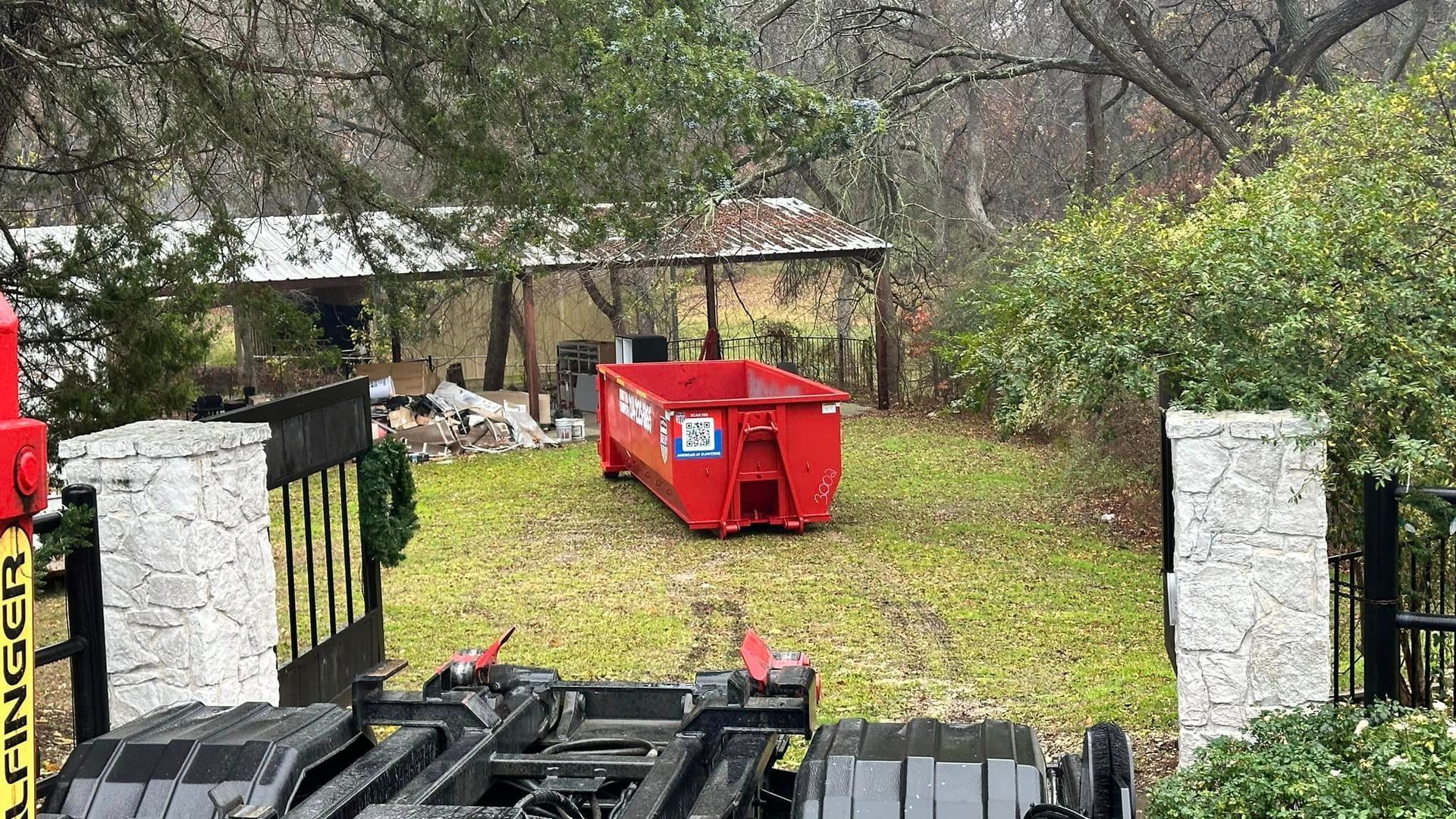Dallas Dumpster Rental Guide: Maximize Space & Efficiency
HOW TO MAXIMIZE SPACE IN YOUR DUMPSTER RENTAL
Welcome to the world of efficient waste management in Dallas! Whether you’re a homeowner embarking on a renovation project or a business owner overseeing a large commercial construction, understanding how to maximize the space in your dumpster rental is crucial. Not only does it make financial sense, but it also contributes to a more sustainable environment. In this guide, we'll walk you through practical tips and strategies, tailored for both residential and commercial clients in the Dallas area, to ensure you get the most out of your dumpster rental.
UNDERSTANDING DUMPSTER SIZES AND SELECTION
Choosing the right dumpster size is the first step in waste management efficiency. In Dallas, dumpster sizes range from small 10-yard containers ideal for minor home cleanouts to large 40-yard containers suitable for commercial construction debris. For residential projects like room remodels, a 20-yard dumpster often suffices, while larger commercial projects may require multiple or larger dumpsters. It’s important to assess the volume of waste accurately to avoid unnecessary additional costs for underestimating or overestimating your needs.
MAXIMIZING TECHNIQUES BY DUMPSTER SIZE:
- 3-Yard Dumpster Bags:
Ideal for small-scale residential projects. Maximize space by flattening items and filling it with uniformly sized debris.
- 15-Yard Dumpsters:
Perfect for medium home projects. Use vertical space effectively by stacking items and filling gaps.
- 20-Yard Dumpsters:
Great for larger home renovations. Load heavy items first, then fill in with lighter waste.
- 25-Yard Dumpsters:
Suited for significant remodeling or small commercial projects. Distribute weight evenly and use the height of the dumpster wisely.
- 30-Yard Dumpsters:
Essential for large construction sites. Plan your loading process and consider compacting waste if possible.
PREPARING ITEMS FOR DISPOSAL
Before tossing items into the dumpster, consider how you can optimize space. For residential clients, this might mean breaking down furniture or flattening cardboard boxes. Commercial clients, dealing with larger quantities of waste, should focus on dismantling larger structures into smaller, more manageable pieces. Sorting your waste into different categories can also streamline the disposal process and aid in recycling efforts, a practice particularly beneficial in Dallas’s environmentally conscious market. Here’s a few tips for residential and commercial dumpster rentals in Dallas:
- BREAKING DOWN FURNITURE:
RESIDENTIAL:
Disassemble beds, tables, and chairs into smaller components. Remove legs from tables and backs from couches to conserve space.
COMMERCIAL:
For office clear-outs, disassemble cubicles, desks, and large shelving units.
- FLATTENING CARDBOARD AND PACKAGING MATERIALS:
RESIDENTIAL:
Flatten all cardboard boxes and packaging materials to create more room. Avoid leaving empty spaces inside boxes.
COMMERCIAL:
Utilize a cardboard baler if available for large quantities of cardboard, especially in retail or warehouse clear-outs.
- DISMANTLING LARGER STRUCTURES:
RESIDENTIAL:
For home renovations, break down cabinetry, kitchen islands, and built-in furniture into smaller parts.
COMMERCIAL:
In construction sites, cut larger pieces of wood or metal into smaller segments for more efficient disposal.
- SORTING WASTE INTO CATEGORIES:
RESIDENTIAL:
Separate materials like metals, woods, and plastics. This not only maximizes space but also facilitates recycling.
COMMERCIAL:
Implement a waste segregation system on-site for different materials such as concrete, wood, metal, and drywall.
- COMPACTING SOFT MATERIALS:
RESIDENTIAL:
Compress soft materials like old clothes, curtains, or rugs. Use vacuum storage bags if available.
COMMERCIAL:
For larger scale waste like insulation or packaging foams, use compaction equipment to reduce volume.
- MAXIMIZING VERTICAL SPACE:
BOTH RESIDENTIAL AND COMMERCIAL:
Stack items vertically where possible. Place longer items, such as planks or pipes, vertically along the sides of the dumpster.
- EMPTYING LIQUID CONTAINERS:
RESIDENTIAL:
Ensure paint cans, cleaning bottles, or other liquid containers are empty or dried out to prevent spillage and wasted space.
COMMERCIAL:
In industrial cleanouts, drain any liquid waste from containers or machinery before disposal.
EFFICIENT
LOADING TECHNIQUES
Loading a dumpster correctly is crucial for maximizing its space. Start with heavy, flat items at the bottom, creating a stable base. Then, layer lighter materials on top. For residential projects, such as home renovations or garden clean-ups, alternating between different types of waste can help fill in gaps. Commercial projects require a more systematic approach due to the larger volume and variety of waste. Always be mindful of the dumpster's fill line to avoid overloading, a common issue in both residential and commercial projects that can lead to additional fees or safety hazards. Here’s a few tips:
- LAYERING HEAVY AND FLAT ITEMS AT THE BOTTOM:
RESIDENTIAL:
Start with items like old flooring, tiles, or flat-packed furniture pieces. These create a stable base and allow for easier stacking of other materials.
COMMERCIAL:
Begin with heavy construction materials like concrete slabs, steel sheets, or large wooden boards. This approach not only maximizes space but also ensures stability in the dumpster.
- STRATEGIC PLACEMENT OF BULKY ITEMS:
RESIDENTIAL:
Place bulky items such as appliances, large furniture, or tree branches strategically to avoid empty pockets of space. Consider their shape and how they can interlock with other waste.
COMMERCIAL:
For larger items like machinery parts or big containers, find the best angle for them to occupy minimal space while maintaining dumpster balance.
- ALTERNATING DIFFERENT TYPES OF WASTE:
RESIDENTIAL:
Mix different types of waste – for instance, alternate between garden waste, household debris, and construction materials. This helps to fill in smaller gaps and use space more efficiently.
COMMERCIAL:
Layer different materials like drywall, metal scraps, and wood. This ensures even distribution of weight and optimizes space.
- FILLING GAPS WITH LIGHTER, SMALLER ITEMS:
RESIDENTIAL:
Use smaller items such as broken-down boxes, small household debris, or garden trimmings to fill gaps between larger items.
COMMERCIAL:
Fill voids with smaller construction debris, packaging materials, or insulation.
- MINDFUL OF THE DUMPSTER’S FILL LINE:
BOTH RESIDENTIAL AND COMMERCIAL:
Regularly check the fill line while loading. Overloading not only incurs additional fees but also poses a safety hazard. It’s important to stop loading when the waste level reaches the fill line.
- EVEN DISTRIBUTION OF WEIGHT:
RESIDENTIAL:
Distribute weight evenly across the dumpster to prevent shifting during transport, which could be dangerous.
COMMERCIAL:
Especially important in large dumpsters, an even distribution prevents tipping and makes transportation safer.
- UTILIZING COMPACTION WHERE POSSIBLE:
RESIDENTIAL:
If dealing with compressible waste like garden waste or old clothing, compact them to create more room.
COMMERCIAL:
Use mechanical compaction tools for compressible waste like cardboard, foam, or soft construction materials.
PROHIBITED ITEMS AND HAZARDOUS WASTE
Both residential and commercial dumpster rentals in Dallas should be aware of prohibited items. Hazardous materials, such as chemicals, paints, and tires, are not permitted in standard dumpsters. For commercial projects, special disposal methods may be required for construction materials like asbestos or lead-based paints. It’s essential to consult with your rental provider about the proper disposal of these items to comply with Dallas’s waste management regulations.
LEGAL AND SAFETY CONSIDERATIONS
In Dallas, both residential and commercial dumpster users must adhere to certain legal and safety considerations. This includes obtaining necessary permits for placing dumpsters on public property and ensuring the dumpster does not block traffic or create a safety hazard. Be mindful of weight limits to avoid overfilling, which can lead to dangerous situations and potential legal issues.
ADVANCED TIPS AND TRICKS
For the savvy renter, there are advanced techniques to maximize dumpster space. Residential clients can consider sharing a dumpster with neighbors for community clean-up projects, effectively reducing costs and increasing utilization. Commercial clients in Dallas might benefit from compacting waste when possible or scheduling regular pickups for long-term projects to continuously free up space. These strategies are particularly useful in bustling urban settings where space and efficiency are paramount. Here’s a breakdown:
- COMMUNITY DUMPSTER SHARING:
RESIDENTIAL:
Collaborate with neighbors for community clean-up projects. Share a single dumpster for multiple households, reducing individual costs and maximizing dumpster utilization. Coordinate schedules for efficient use.
- SCHEDULED REGULAR PICKUPS:
COMMERCIAL:
For long-term projects in Dallas, schedule regular dumpster pickups. This ensures that the dumpster is emptied at optimal intervals, freeing up space and maintaining efficiency on busy job sites.
- COMPACT WASTE STRATEGICALLY:
COMMERCIAL:
Invest in compactors or balers for materials like cardboard, paper, and plastics. Compacting waste reduces volume, allowing for more waste to be stored in the same space.
- PRE-SORTING WASTE STREAMS:
COMMERCIAL:
Implement pre-sorting of waste streams on-site. Have designated containers for recyclables, general waste, and specific materials like concrete or metal. This minimizes sorting at the disposal site and optimizes recycling.
- OVERNIGHT DUMPSTER SECURITY:
COMMERCIAL:
Install security measures like locks or enclosures for dumpsters left on-site overnight. This prevents unauthorized dumping and helps maintain control over the space within the dumpster.
- OPTIMIZE COLLECTION ROUTES:
COMMERCIAL:
Work with your dumpster rental provider in Dallas to optimize collection routes. Efficient routing reduces turnaround time for emptied dumpsters, ensuring that they are back on-site promptly.
- TRAINING AND EDUCATION:
COMMERCIAL:
Train your team or workers to follow efficient waste management practices. Educate them on how to maximize space, segregate waste, and comply with local Dallas regulations.
- DIGITAL TRACKING AND REPORTING:
COMMERCIAL:
Use digital tools to track and report on dumpster usage. This allows for data-driven decisions on waste management strategies and optimizing space allocation.
These advanced tips and tricks are tailored for both residential and commercial clients in Dallas and are particularly valuable in high-density urban settings where efficient space utilization is crucial. By implementing these strategies, renters can further enhance their waste management efficiency, reduce costs, and contribute to a more sustainable environment.
Maximizing the space in your dumpster rental is a blend of art and science, whether for a small home project or a large commercial construction in Dallas. By following these guidelines, you can ensure that your waste management process is as efficient, cost-effective, and environmentally friendly as possible.

